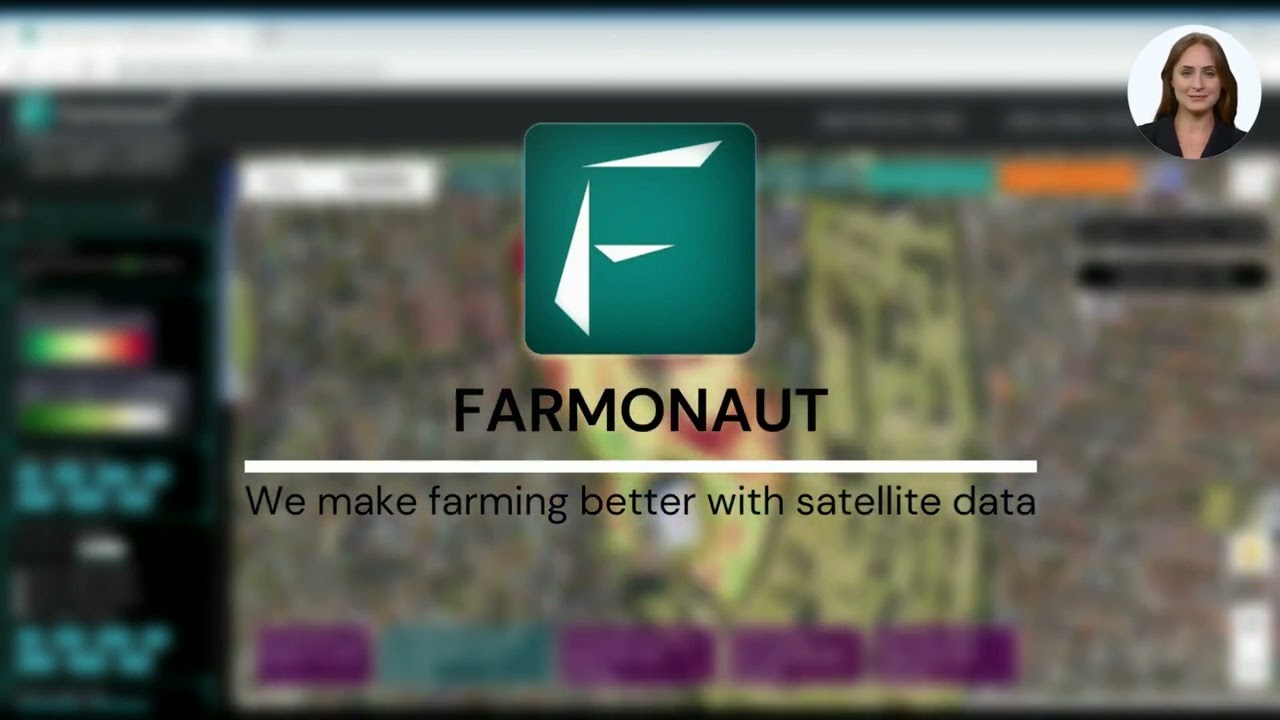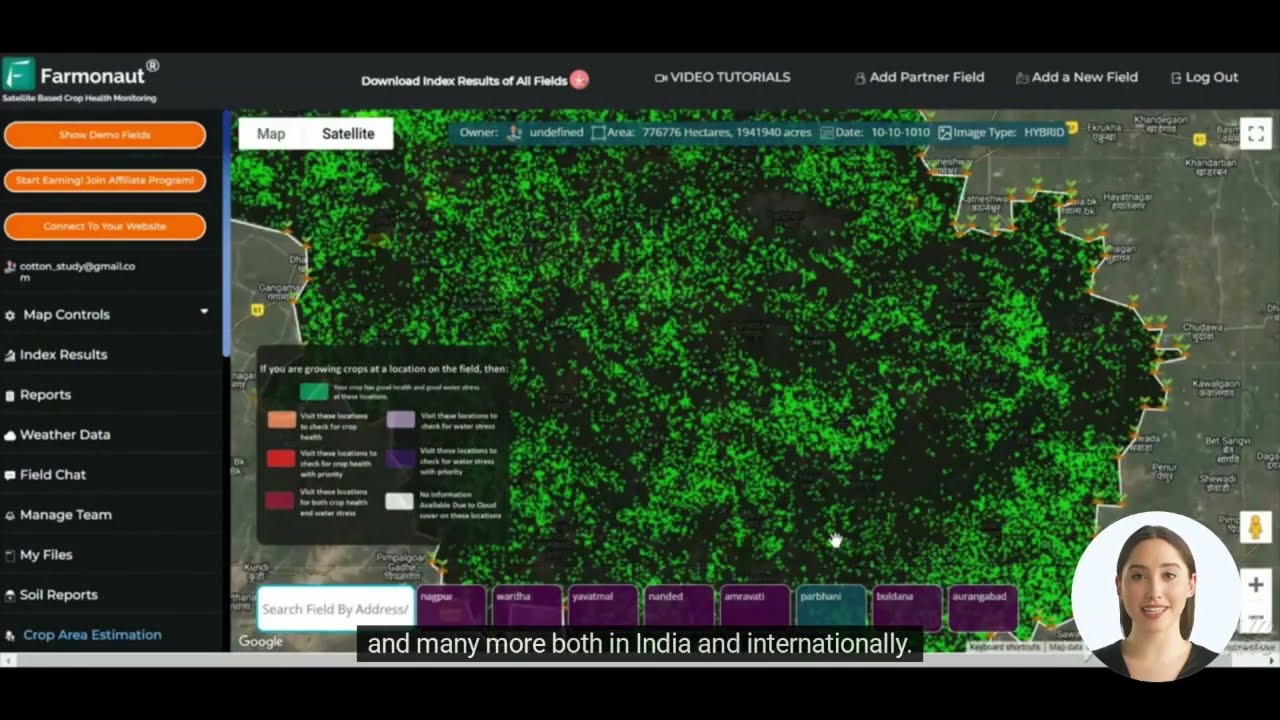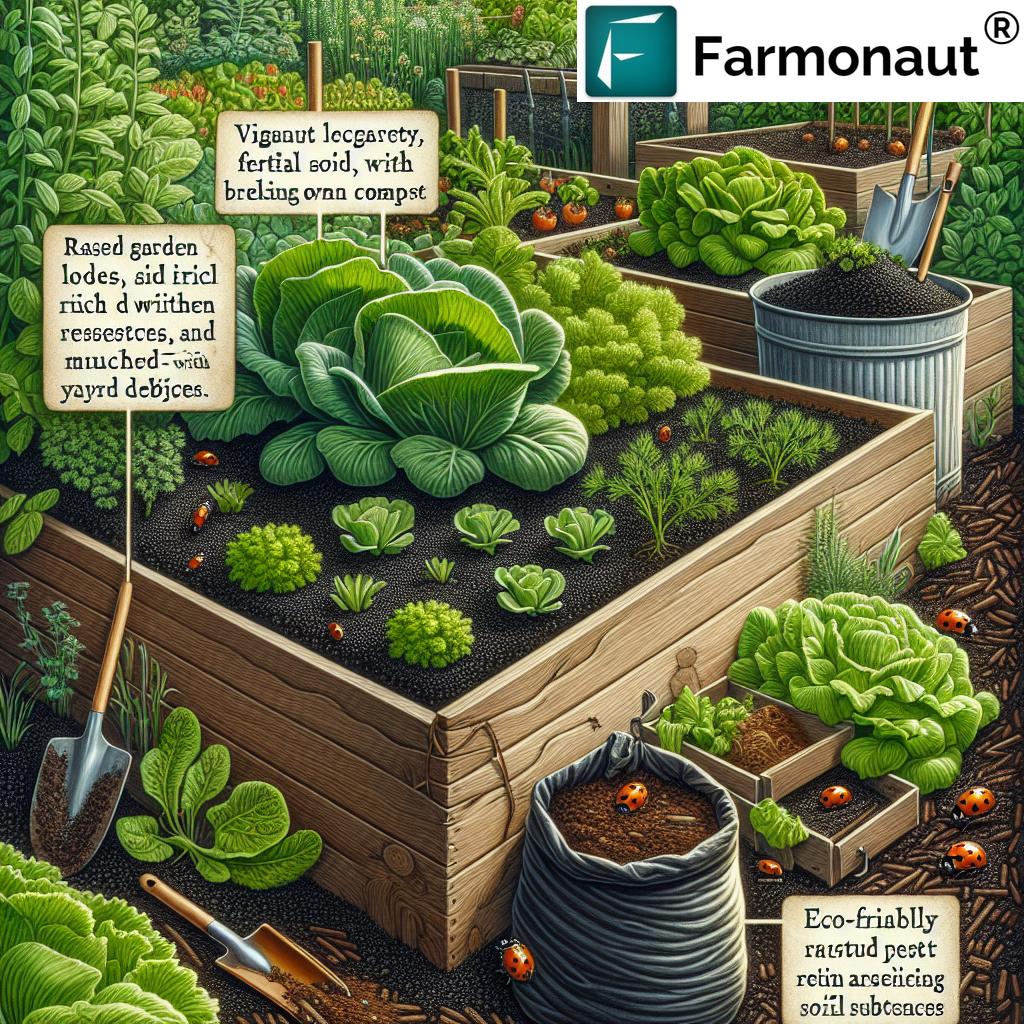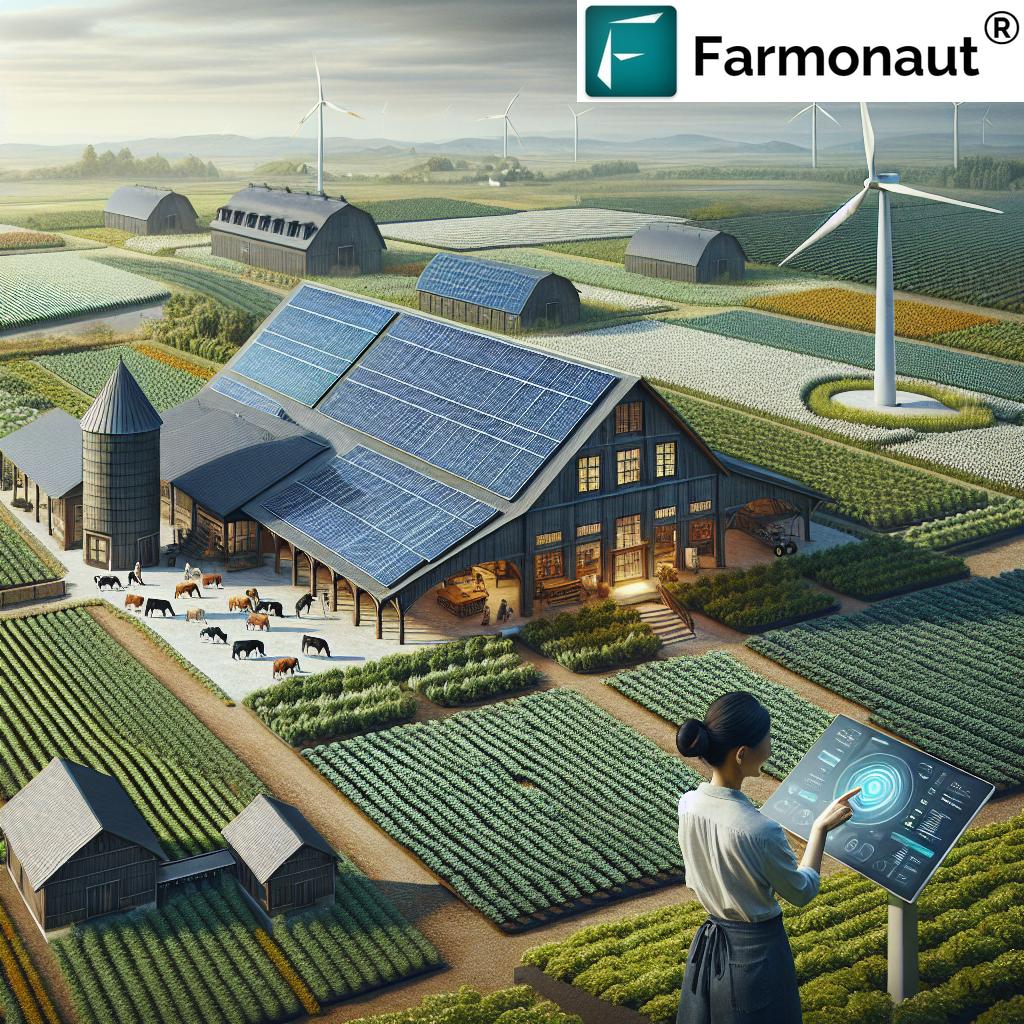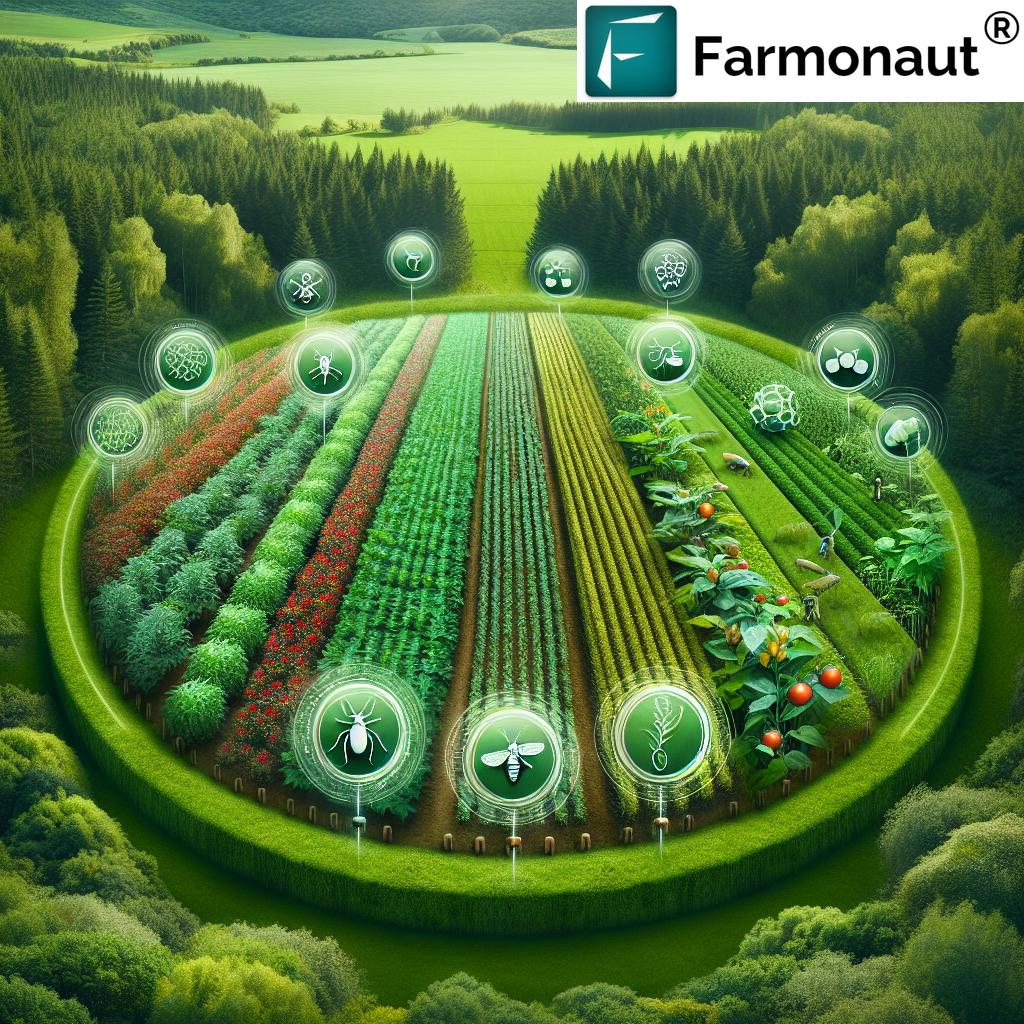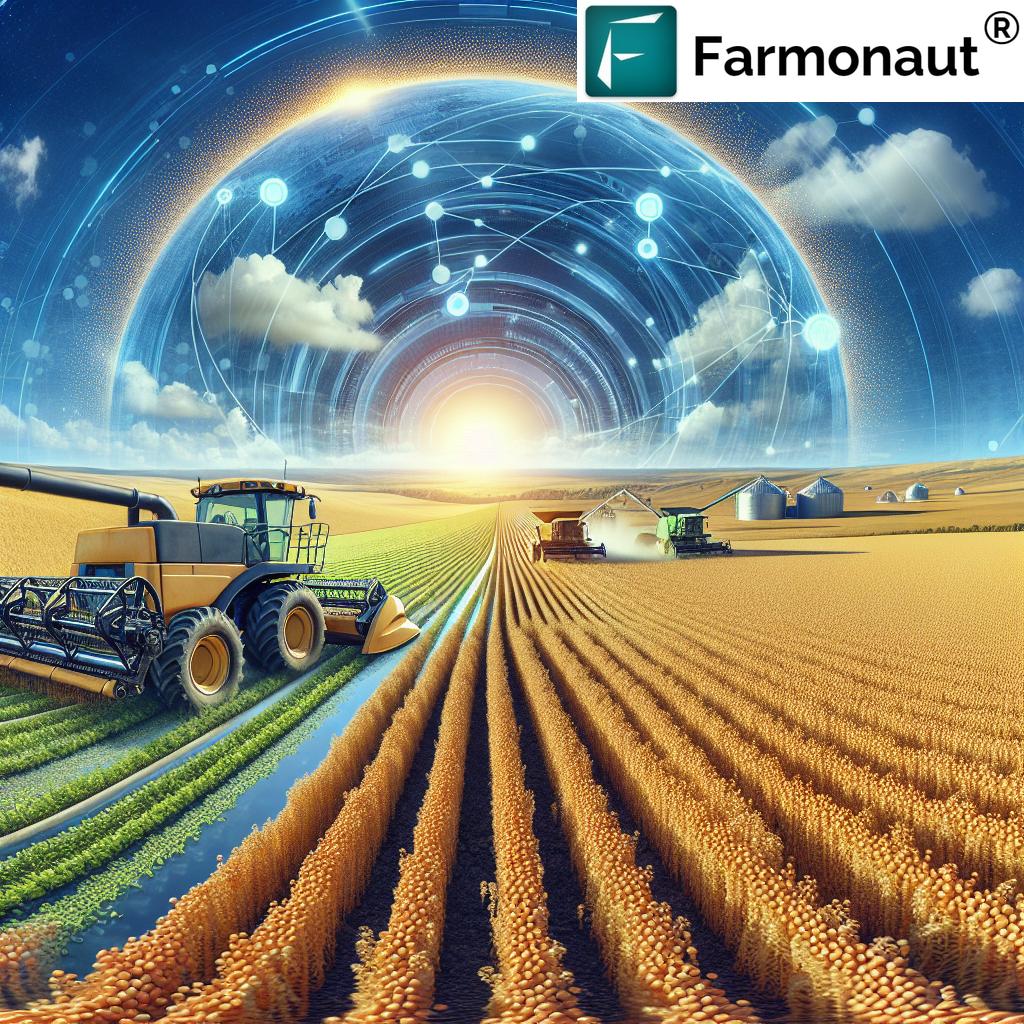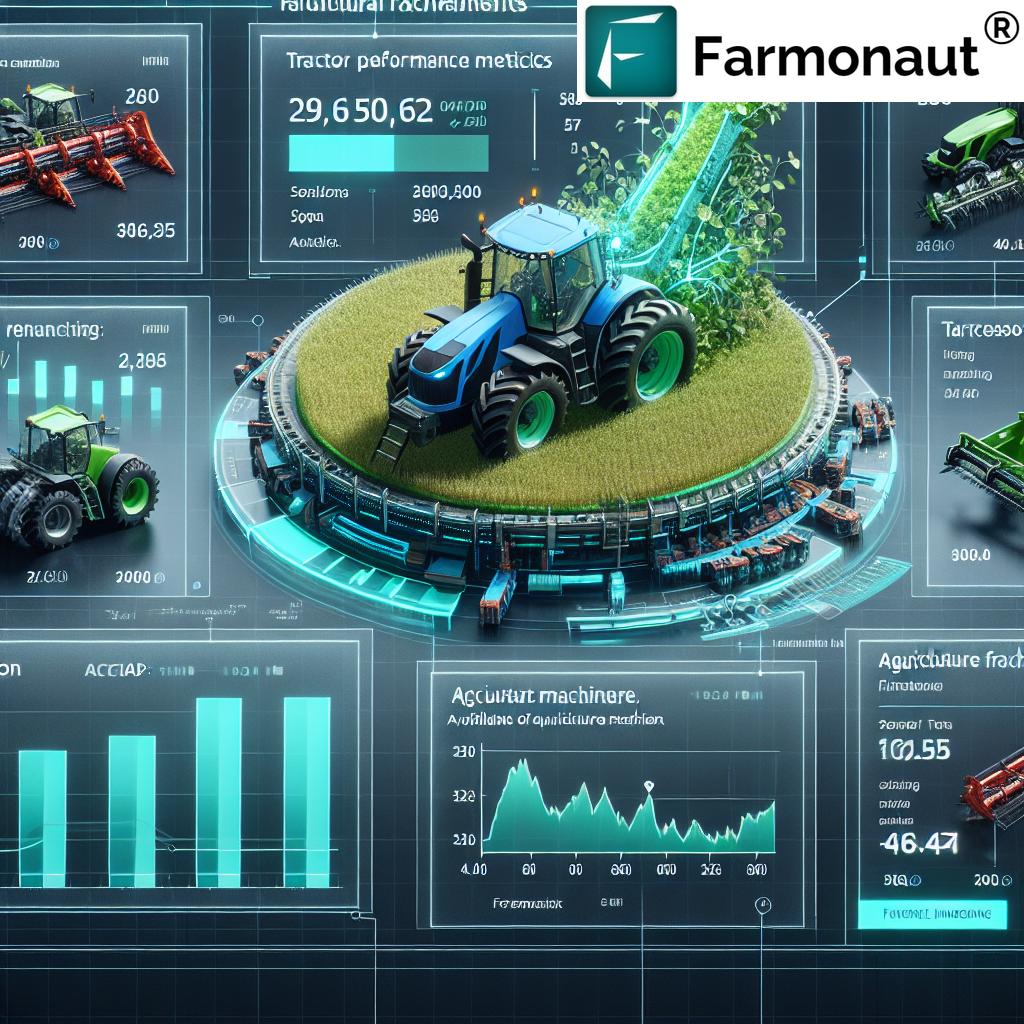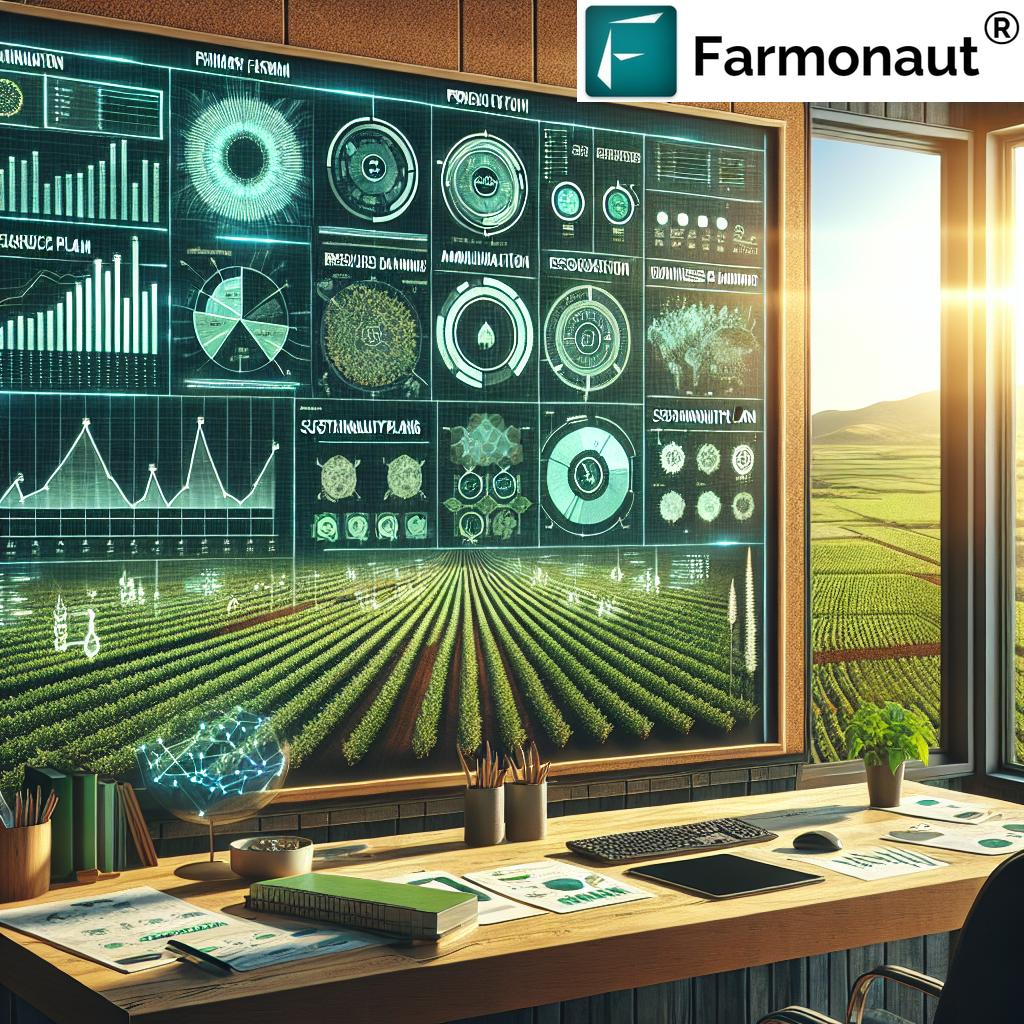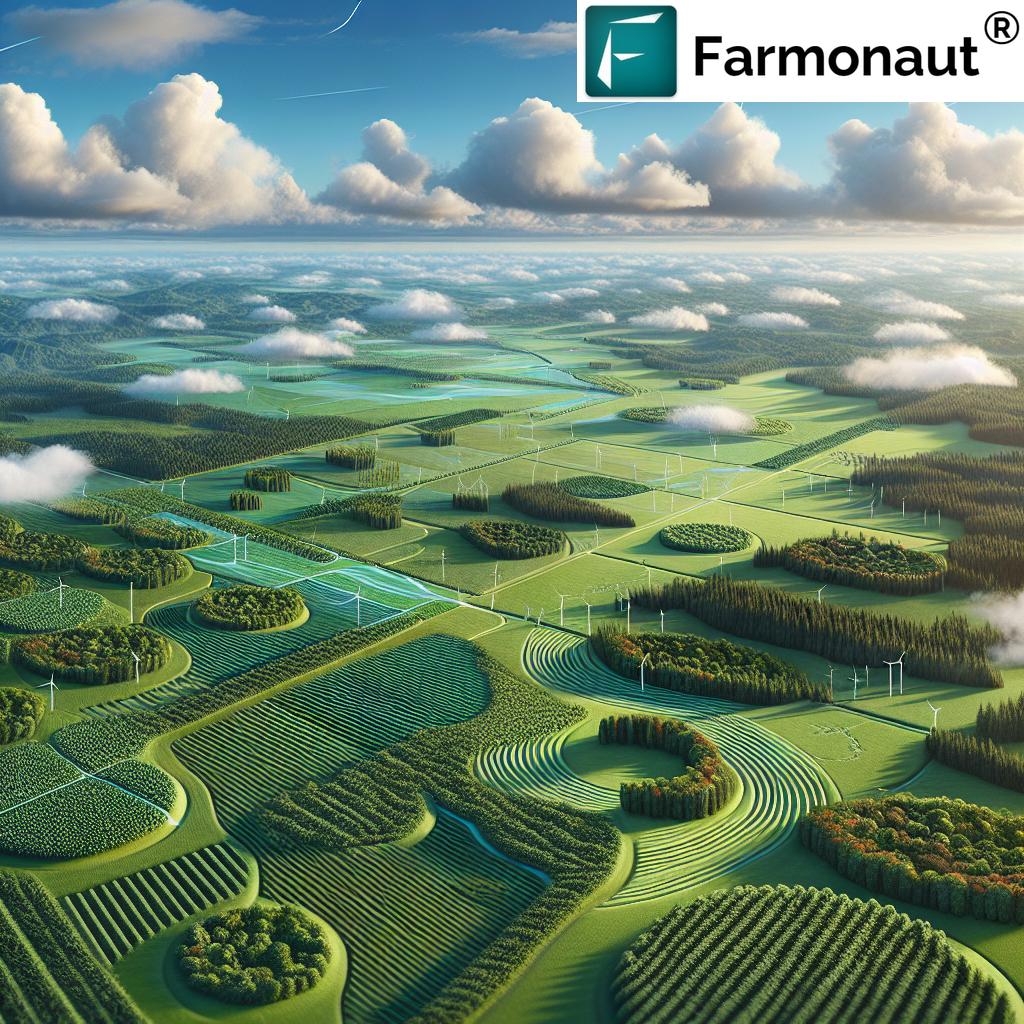Mastering Digital Agriculture: Farmonaut’s Guide to Crop Management and Market Trends in East and West
“Digital agriculture guides have increased crop yields by up to 20% in some regions through precision farming technologies.”
Welcome to our comprehensive guide on digital agriculture and the latest crop management strategies shaping the agricultural landscape across the East and West. In this extensive update, we’ll explore cutting-edge precision farming technologies, market trends, and sustainable practices that are revolutionizing the way we approach agriculture in the 21st century.
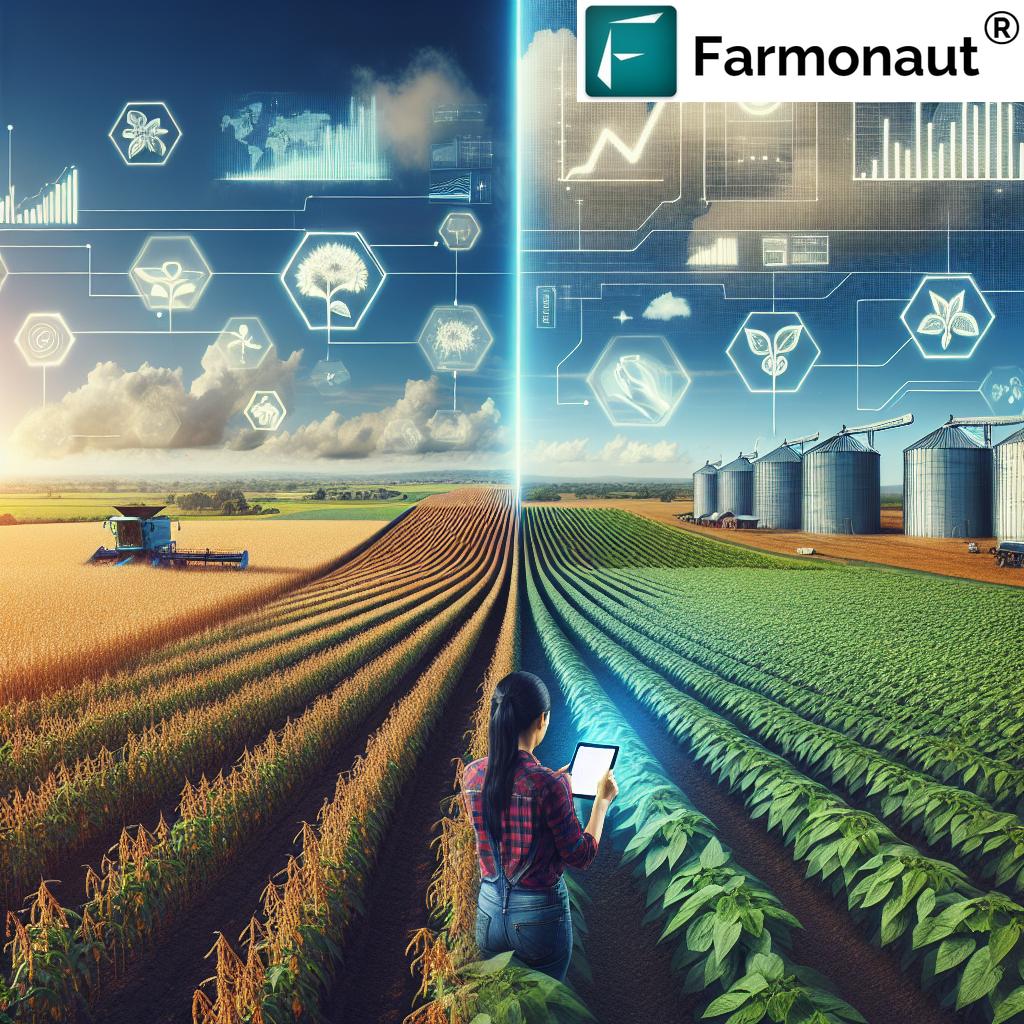
The Rise of Digital Agriculture
As we navigate the complexities of modern farming, digital agriculture guides have become indispensable tools for farmers and agribusinesses alike. These guides integrate the latest technological advancements with traditional farming wisdom, offering a holistic approach to crop management and market analysis.
At Farmonaut, we’re at the forefront of this digital revolution, providing farmers with state-of-the-art satellite-based farm management solutions. Our platform combines real-time crop health monitoring, AI-driven advisory systems, and blockchain-based traceability to empower farmers with data-driven insights.
Precision Farming Technologies: A Game-Changer for Global Agriculture
Precision farming technologies are transforming agricultural practices across the globe. By leveraging satellite imagery, IoT sensors, and big data analytics, farmers can now make informed decisions about every aspect of their operations, from seed selection to harvest timing.
- Satellite-Based Crop Monitoring: Our Farmonaut platform utilizes multispectral satellite images to provide real-time insights into crop health, soil moisture levels, and vegetation indices like NDVI.
- AI-Powered Advisory Systems: The Jeevn AI system offers personalized recommendations based on real-time data analysis, helping farmers optimize their resource usage and boost yields.
- Drone Technology: Drones equipped with high-resolution cameras and sensors are being used for precise crop scouting and targeted application of inputs.
These technologies are not just improving yields; they’re also contributing to more sustainable farming practices by reducing waste and minimizing environmental impact.
East vs. West: A Comparative Look at Agricultural Market Trends
The agricultural landscapes of the East and West present unique challenges and opportunities. Let’s explore some key differences and similarities in market trends across these regions:
| Trend Category | Eastern Region | Western Region |
|---|---|---|
| Precision Farming Adoption Rate (%) | 35% | 65% |
| Soybean Yield (bushels/acre) | 45 | 52 |
| Corn Disease Prevention Methods | Integrated Pest Management, Crop Rotation | Genetic Modification, Precision Spraying |
| Popular Sustainable Farming Practices | Agroforestry, Organic Farming | No-Till Agriculture, Vertical Farming |
| AgTech Investment ($billions) | 5.2 | 7.8 |
This comparison highlights the need for tailored approaches to digital agriculture in different regions. At Farmonaut, we recognize these regional nuances and offer customized solutions to meet the specific needs of farmers in both Eastern and Western markets.
Soybean Yield Optimization: Strategies for Success
Soybean remains a crucial crop in global agriculture, and optimizing its yield is a top priority for farmers worldwide. Here are some key strategies that digital agriculture guides are recommending:
- Precision Planting: Using GPS-guided planters for optimal seed spacing and depth.
- Variable Rate Technology (VRT): Applying fertilizers and pesticides at variable rates based on soil and crop needs.
- Drought-Resistant Varieties: Selecting soybean varieties that perform well under water-stressed conditions.
- Data-Driven Decision Making: Utilizing historical yield data and predictive analytics to inform planting and management decisions.
By implementing these strategies and leveraging Farmonaut’s satellite-based crop monitoring, farmers can significantly boost their soybean yields while optimizing resource use.
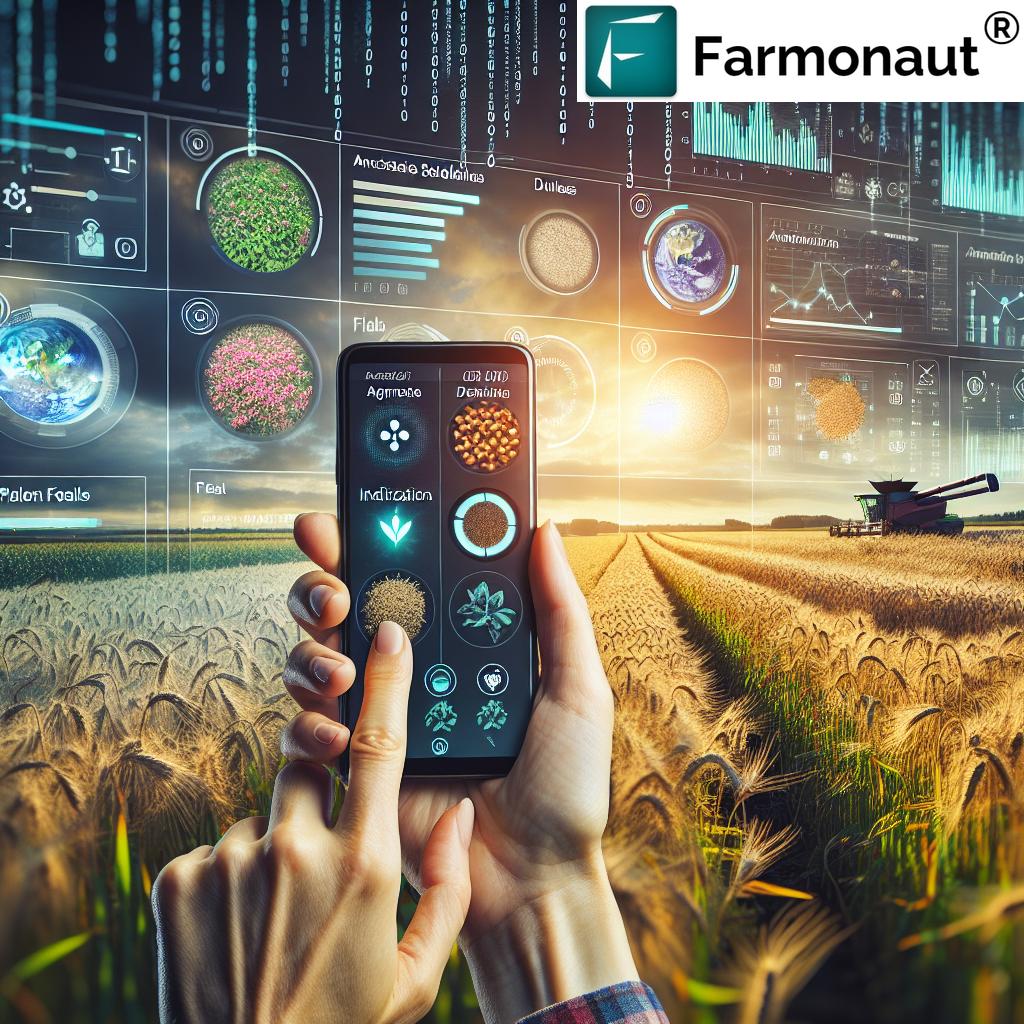
The Impact of Weather on Crop Prices: Navigating Market Volatility
“Weather-related factors can influence crop prices by as much as 30% in global agricultural markets.”
Understanding the relationship between weather patterns and crop prices is crucial for farmers and market analysts alike. Our digital agriculture guides emphasize the importance of integrating weather data into decision-making processes:
- Long-term Weather Forecasting: Utilizing advanced meteorological models to predict seasonal weather patterns.
- Climate Change Adaptation: Developing strategies to mitigate the impact of changing climate conditions on crop yields.
- Weather-Based Crop Insurance: Implementing innovative insurance products that use satellite and weather data to assess risk and determine payouts.
Farmonaut’s platform integrates real-time weather data with crop health information, providing farmers with a comprehensive tool for managing weather-related risks and making informed market decisions.
Sustainable Farming Practices: Balancing Productivity and Environmental Stewardship
The push towards sustainability is reshaping agricultural practices globally. Digital agriculture guides are increasingly focusing on techniques that maintain high productivity while minimizing environmental impact:
- Conservation Tillage: Reducing soil disturbance to improve soil health and reduce erosion.
- Precision Irrigation: Using sensor-based systems to optimize water usage and reduce waste.
- Integrated Pest Management (IPM): Combining biological, cultural, and chemical methods to control pests while minimizing environmental harm.
- Cover Cropping: Planting cover crops to improve soil fertility and reduce the need for synthetic fertilizers.
At Farmonaut, we support these sustainable practices by providing farmers with tools to monitor their environmental impact, including carbon footprint tracking and resource management solutions.
Corn Disease Prevention: Safeguarding Your Crop
Corn remains a staple crop in many regions, and protecting it from diseases is paramount. Our digital agriculture guides offer comprehensive strategies for corn disease prevention:
- Early Detection: Using Farmonaut’s satellite-based crop health monitoring to identify potential disease outbreaks early.
- Genetic Resistance: Selecting corn varieties with built-in resistance to common diseases.
- Crop Rotation: Implementing effective rotation schedules to break disease cycles.
- Precision Application: Using targeted fungicide applications based on real-time disease risk assessments.
By combining these strategies with data-driven insights, farmers can significantly reduce the risk of crop losses due to diseases.
AgTech Solutions: Empowering the Modern Farmer
The agtech revolution is in full swing, and our digital agriculture guides are at the forefront of showcasing innovative solutions for farmers. Some key technologies gaining traction include:
- Blockchain for Traceability: Implementing blockchain technology to ensure transparency and traceability in the agricultural supply chain.
- Machine Learning for Yield Prediction: Utilizing advanced algorithms to forecast crop yields with increasing accuracy.
- Robotics and Automation: Introducing autonomous machinery for planting, weeding, and harvesting to address labor shortages and increase efficiency.
Farmonaut’s platform integrates seamlessly with many of these technologies, providing a comprehensive solution for modern farmers looking to leverage the latest in agtech innovations.
Market Analysis: Grains, Cash Crops, and Futures
Staying informed about market trends is crucial for farmers and agribusinesses. Our digital agriculture guides provide in-depth analysis of key markets:
- Grain Markets: Tracking global supply and demand trends for wheat, corn, and rice.
- Cash Crops: Analyzing price fluctuations and market opportunities for crops like cotton, tobacco, and sugarcane.
- Futures Markets: Providing insights into agricultural commodity futures to help farmers make informed hedging decisions.
By leveraging Farmonaut’s real-time data and market insights, farmers can make more informed decisions about what to plant, when to sell, and how to optimize their operations for maximum profitability.
Regional Insights: U.S. and Brazilian Agriculture
Our digital agriculture guides offer specialized content for major agricultural regions, with a focus on the U.S. and Brazil:
United States:
- Midwest Corn Belt: Strategies for maximizing corn and soybean yields in the heart of U.S. agriculture.
- California Central Valley: Innovative approaches to water management and high-value crop production.
- Southern Cotton Belt: Integrating precision agriculture techniques in cotton farming.
Brazil:
- Cerrado Region: Sustainable expansion of soybean production in this crucial agricultural frontier.
- Amazon Basin: Balancing agricultural development with forest conservation efforts.
- Southern Brazil: Diversification strategies for small and medium-sized farms.
Farmonaut’s platform is adaptable to these diverse agricultural landscapes, offering tailored solutions for farmers in both countries.
Specialized Content: From Forage to Potatoes
Our digital agriculture guides cover a wide range of specialized topics to cater to diverse farming needs:
- Forage and Grassland Management: Optimizing pasture productivity for livestock operations.
- Potato Cultivation: Implementing precision agriculture techniques in potato farming to improve yield and quality.
- Pulse Crops: Strategies for growing chickpeas, lentils, and other pulse crops, with a focus on soil health and crop rotation benefits.
Farmonaut’s satellite-based monitoring can be applied to these specialized crops, providing valuable insights for farmers across various agricultural sectors.
Staying Connected: The Role of Agricultural News Apps
In today’s fast-paced agricultural landscape, staying informed is crucial. Agricultural news apps, including Farmonaut’s platform, play a vital role in keeping farmers connected to essential industry information:
- Real-Time Market Updates: Accessing up-to-the-minute commodity prices and market trends.
- Weather Alerts: Receiving timely notifications about weather conditions that could impact crops.
- Industry News: Staying informed about the latest developments in agricultural policy, technology, and best practices.
By leveraging these digital tools, farmers can make more informed decisions and stay ahead of market fluctuations.
Experience the power of digital agriculture with Farmonaut:
For developers looking to integrate our powerful API into their applications, visit our API page and check out our comprehensive API Developer Docs.
Conclusion: Embracing the Future of Agriculture
As we navigate the complexities of modern farming, digital agriculture guides and innovative technologies are becoming indispensable tools for farmers worldwide. From precision farming and sustainable practices to market analysis and specialized crop management, the agricultural landscape is evolving rapidly.
At Farmonaut, we’re committed to empowering farmers with the latest in satellite-based farm management solutions, AI-driven insights, and blockchain traceability. By embracing these digital tools and staying informed about global market trends, farmers can optimize their operations, increase yields, and contribute to a more sustainable and productive agricultural future.
FAQ Section
- Q: How can digital agriculture guides improve farm productivity?
A: Digital agriculture guides provide farmers with real-time data, AI-driven insights, and precision farming techniques that can optimize resource use, improve crop health monitoring, and increase overall yields. - Q: What role does satellite imagery play in modern farming?
A: Satellite imagery enables farmers to monitor crop health, soil moisture levels, and vegetation indices across large areas, allowing for targeted interventions and more efficient resource management. - Q: How does weather impact agricultural markets?
A: Weather conditions can significantly influence crop yields, quality, and availability, which in turn affects market prices. Understanding these weather-market relationships is crucial for effective farm management and market strategy. - Q: What are some key sustainable farming practices promoted by digital agriculture guides?
A: Common sustainable practices include precision irrigation, integrated pest management, conservation tillage, and the use of cover crops to improve soil health and reduce environmental impact. - Q: How can farmers benefit from agricultural news apps?
A: Agricultural news apps provide farmers with real-time market updates, weather alerts, and industry news, enabling them to make informed decisions and stay competitive in a rapidly changing agricultural landscape.




